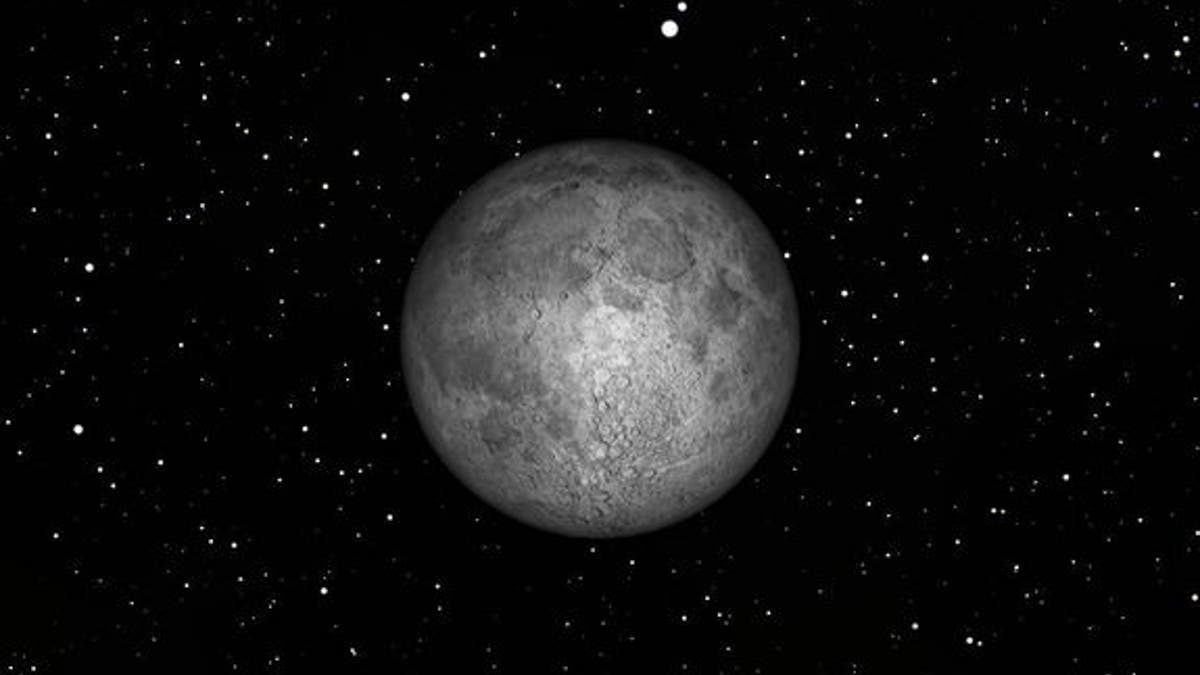
Friday, Dec. 28, 2012, 5:21 a.m. EST. The full moon of December is called the oak moon. Other names are frost moon, winter moon, long night’s moon, and moon before Yule. In Hindi it is known as margashirsha poornima. Its Sinhala (Buddhist) name (Starry Night Software)
The last full moon of 2012 will rise into the night sky this week in a year-ending lunar treat.
The full moon is actually an instantaneous event when the moon is exactly opposite the sun in the Earth's sky, and this month that occurs on Friday morning, Dec. 28, at 5:21 a.m. EST (1021 GMT). But, to the naked eye, the moon "looks" full for a couple of days on either side of that time, so the exact date doesn't matter.
Many owners of new telescopes are disappointed when they look at the planets. At its largest, the planet Venus is just barely one arc minute in diameter, about 1/30th of the diameter of the sun or the moon, and all the other planets appear smaller than that.
Telescope owners complain that the planets don't look any larger with a telescope than they do with the naked eye. That isn't true of course, because any telescope will magnify everything dozens or hundreds of times. But when something is as small as a planet, even a lot of magnification won't make it look very big. [Amazing Moon Photos of 2012]
Moon size comparison
The reason why the sun appears 30 times bigger than Venus is because the sun is very large. Its true diameter is more than 100 times that of Venus, or of Earth, for that matter, since Venus and Earth are about the same size. The moon appears 30 times bigger than Venus not because it is large, but because it is very close to us. The moon is 2,159 miles in diameter as compared to the Earth's 7,926 miles and Venus' 7,521 miles.
In other words, the moon is just slightly more than a quarter of the diameter of the Earth or Venus. Mercury is the planet closest in size to the moon at 3,032 miles in diameter, about 40 percent larger than our moon. One of the reasons that Pluto was demoted to "dwarf planet" status was its small diameter of only 1,485 miles, two-thirds of the diameter of our moon.
Our moon is very large in proportion to its planet, Earth, more than any other moons in the solar system except for Pluto's moon Charon. But because other planets are much larger than Earth, several of their moons are much larger than ours, including three of Jupiter's moons (Io, Ganymede, and Callisto) and one of Saturn's (Titan). Of these, Ganymede is the largest at 3,270 miles, slightly larger than the planet Mercury.
The moon as a planet
Even if you don't own a telescope, looking at the moon with the naked eye can show you the challenges faced by planetary observers.
Earlier this week we saw Jupiter shining brightly alongside the moon. It would take a telescope magnifying about 40 times to make Jupiter appear as big as the moon does with the naked eye. When Mars was closest to Earth in 2003, it took a telescope magnifying 75 times to make Mars appear as big as the moon with the naked eye. At present Mars on the far side of the sun, and requires a telescope magnifying 430 times to make it appear as big as the moon does with the naked eye.
So, if you want an observing challenge similar to trying to spot Jupiter's Great Red Spot or Mars' polar cap, try observing detail on the moon with your naked eye.
The man in the moon
What most people see when they look at the moon is "the man in the moon." This is a pattern of light and dark caused by the albedo markings on the moon. “Albedo” is a measure of how much light gets reflected by an area on a planet.
Darker areas on the moon's surface, which the early astronomers called "seas," although we now know that they are dry and airless, form the face of a man, in our mind’s eye. Or, they may form a woman, or a rabbit, depending on your culture. These are very similar to the dusky markings which astronomers observe with telescopes on Mars and Mercury, also called albedo markings.
If you try to sketch the markings you see on the moon, you will find, as experienced planetary observers do, that you can see much finer detail than the man in the moon. You should be able to see some of the smaller seas, such as the Mare Crisium, on the eastern limb of the moon, and one or two of the brighter craters, such as Tycho towards the southern limb.
Once you have tried to sketch the moon with your naked eye, try observing it with a small binocular. You will be amazed at how much more detail you can see, and will begin to experience the wonder Galileo must have felt when he first turned his primitive telescopes on the moon. There really is another world out there.
